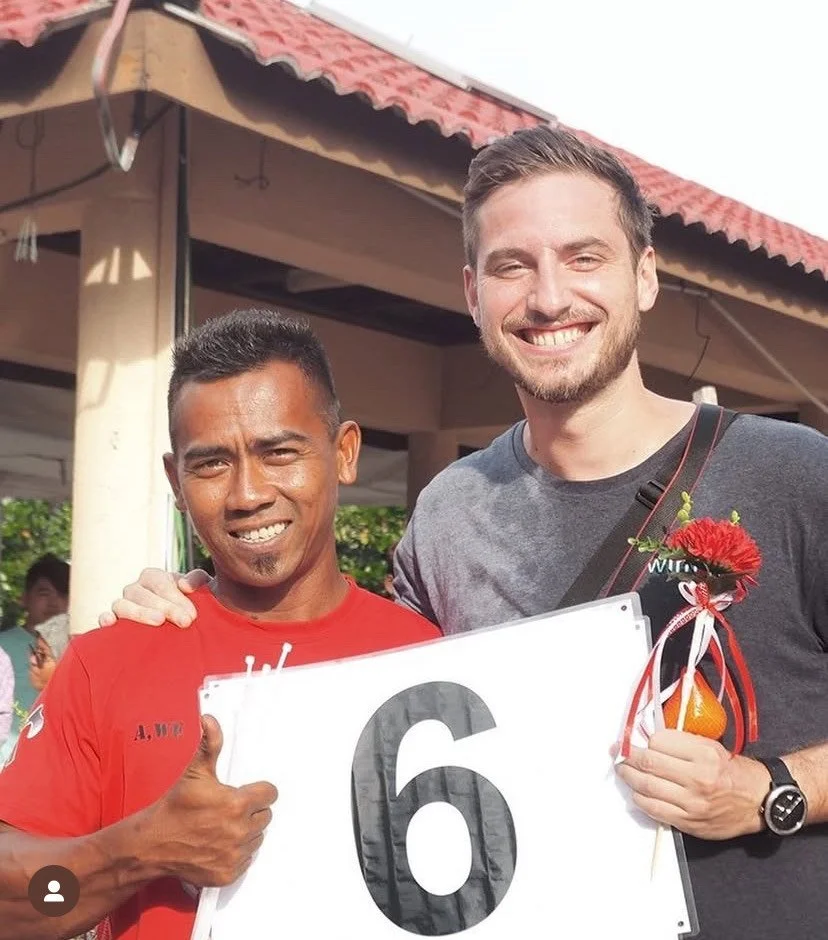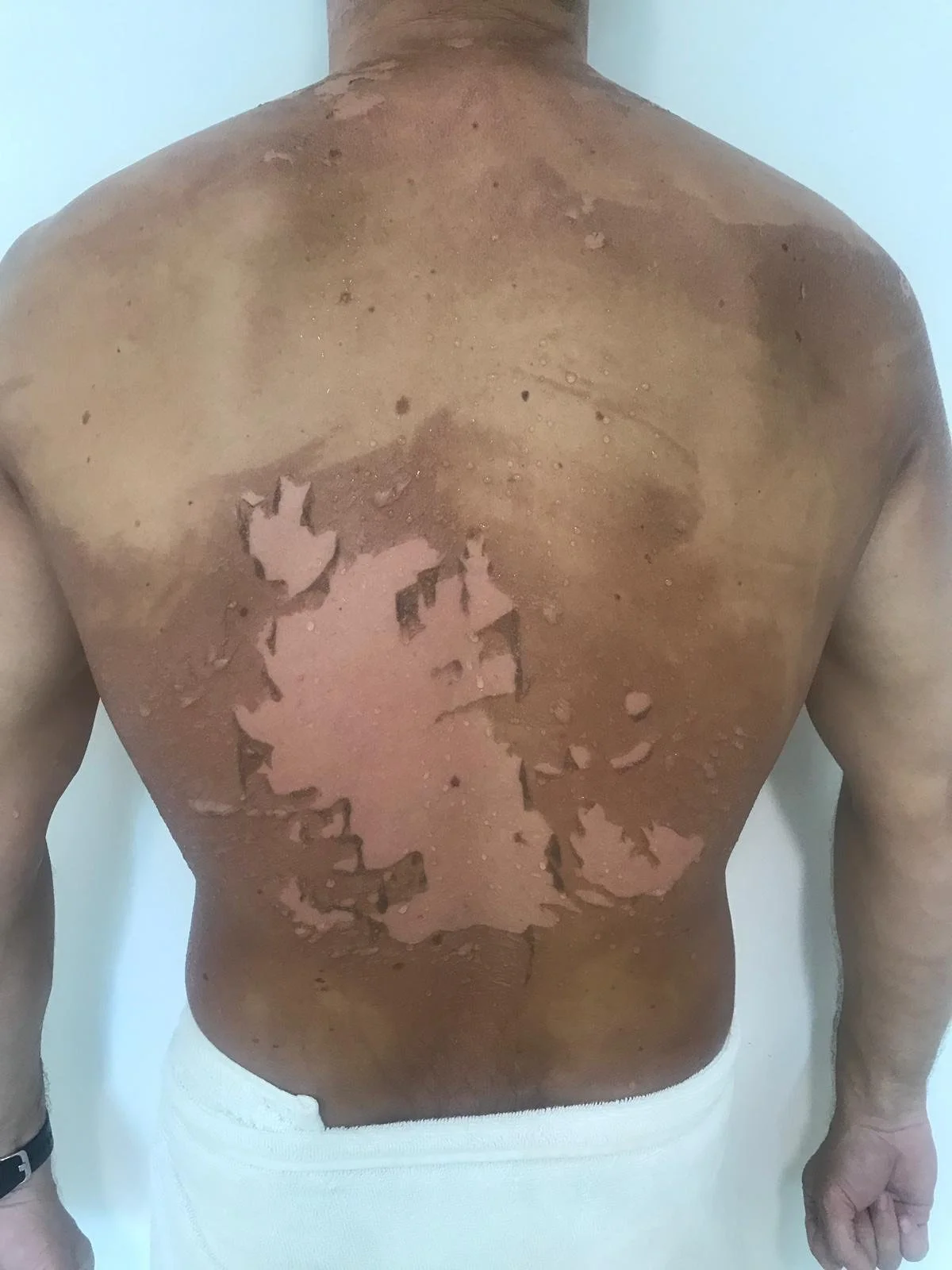How I Trained for a 15km+ Swim (and What I Learned in Malaysia)
There’s something about swimming past 15km that makes you feel like you’ve stepped off the map a bit. It’s no longer about pace, or perfect technique, or even the weather. At that distance, it’s a conversation between your body, the water, and whatever’s rattling around in your head. Whatever darkness is lurking back there will come to the forefront, at the depths of exhaustion lies your own worst enemy!
When I swam the 16km route around Malaysia’s Perhentian Islands I had no idea of the challenge that lay ahead of me. On the surface a seemingly beautiful long distance swim. Crystal clear waters, the chance of seeing turtles and reef sharks and the warm glow of the equatorial sun. It was to be me, my Malaysian ship captain, the open sea, and that searing equatorial heat, I knew I would have a lot of time to think. Whilst this was technically a race with other swimmers from all over the world, it was also a test of endurance: could I hold it together, physically and mentally, for 6 to 7 hours hours in choppy tropical water, with no buoys, no crowds, no music in my ears just the sound of my breath and the slap of waves?
Here’s what I learned out there, and how I’d train again for anything 15km and beyond. And don’t worry I won’t repeat the usual “build a base” or “increase your long swims” stuff you’ve probably read in our 5km and 10km blogs. This is the next layer of the onion. This is how to learn from my mistakes!
THE DAY OF THE RACE IS NOT THE TIME TO MAKE MISTAKES
The biggest mistakes I made were that my training and preparation didn’t match the conditions properly on race day. I did most of my training in Singapore in a 50m pool. Whilst hot it was shaded, none of the 16km of the Perhentian Island swim would be in the shade. In addition, the open water swims I did were at Sentosa Beach which has a really simple buoy line to sight off (it’s fenced off from the open sea where the big ships are.) Because of this it’s really easy to swim in a straight line. Circumnavigating a jagged island would be completely different. Because of this sighting mistake I actually ended up swimming 18km not 16km.
In addition, I didn’t put enough sun cream on for the long swim. I used it on my face and shoulders during training (max 7/8km swims) but for a long swim like this I needed a full body lathering which I forgot to ask a fellow swimmer to help me with. DON’T MAKE THIS MISTAKE. Get yourself lathered up or you can get destroyed by the sun - see below.
Train Your Body for TEMPERATURE (Even If You’re in the UK)
What hit me hardest in Malaysia wasn’t the distance it was the sun and the heat. That thick, damp, cloying tropical heat that clings to your skin even when you’re submerged. I tried to train for it but nothing truly prepares you until you feel it. It can be hard to translate training to the event itself as distance increases.
So how do you train for heat if you're not in Southeast Asia? How do you train for the cold of 15km if you’ve only swum 10km? You have to build a base. You need to train for all conditions, you need to do so regularly. For your 15km swim it might not be the heat but the cold is the problem, again apply the same principle, repetition in training builds adaption. We are creatures of habit and our bodies are no different.
Fuel Like You’re on a Jungle Trek, Not a Sprint
I used to rely on gels and electrolyte tabs. But for the Perhentia Island for some mad reason I decided that the right thing for me to eat would be Malaysia baby food. A decision I would come to regret. Mid‑way through that 16km, my stomach flipped. I’d been swimming over coral reefs, soaking in sunlight and sweat and salt, and my gut was like, “Nope.” I remembered reading a SAS survival book about how if you really needed to go potty in the sea it was best to throw it as far away from you as possible so as not to attract sharks. Now the only sharks around the Perhentian Islands are Blacktip and Whitetip Reef sharks, not really dangerous but I still didn’t fancy the idea of that chasing after me and nibbling my bottom! Alas, I had no choice and decided to do my secretive business as near my support boat as possible, staying close by for the next 30 minutes just incase my anxiety got the better of me and I started playing the Jaws tune in my head.
Now I build my fuelling around real food. That day, I made the mistake of trying something new. Do not do this, stick with what you know and race on what you train on. Stick with real food, something like clingfilm‑wrapped bananas, sticky rice balls, even a mango smoothie. It’s slower to eat, but it gives you something solid to hold onto both physically and mentally. On future swims, I practiced fuelling every 45 minutes with real snacks, and I’d recommend you do the same.
Plan for Mental Reboots Mid‑Swim
Every 5km, I gave myself a reset. It wasn’t fancy I’d flip onto my back, look up at the blue Malaysian sky, and smile. Just 30 seconds of stillness. Then I'd roll back and keep going.
That tiny ritual kept my head from spiralling. I didn’t count laps. I didn’t obsess over pace. I just swam between moments of peace. If you’re training for 15km+, build in your own “mind breaks.” Backstroke, float, check in with yourself. You’ll swim further when your mind feels free.
Train for the Chaos, Not the Lap Counter
There were stretches in Perhentian where the chop was coming from three directions. I couldn’t settle into a rhythm. I had to sight every 10–15 strokes just to stay on course.
That experience changed how I train. Now I swim with intention: I pick messy lakes, swim loops with cross-currents, force myself to do awkward turns around buoys. Long distance swimming isn’t tidy it’s adaptable. You don’t need a perfect set; you need chaos training.
Test Your PREP Like You Test Your Mind
I’d not properly trained or read about salt tongue. "Salt tongue," also known as "salt mouth," is a condition swimmers can experience when exposed to salt water for extended periods, causing the tongue and mouth to become sore, raw, and even bleed. This occurs because the salt water buildup in the mouth and throat irritates the delicate tissues. It's a common, but often underestimated, side effect of marathon swimming and can significantly impact a swimmer's ability to eat, swallow, and even speak. I hadn’t stress-tested it properly for salt tongue and I’ve since learned that people will swill mouthwash before feeds which can help counter it. I wish I’d known as my tongue started flaking off post swim.
So now I treat kit the way I treat endurance: test it under pressure. Swim in full gear. Try new goggles in choppy water. See what works when things go wrong. The more you rehearse the chaos, the calmer you’ll be out there.
Forget the Data. Trust the Effort.
During the Perhentian swim, I actually forgot to turn my Strava on (Garmin Watch). It was a blessing in disguise as it stopped me clock watching and I just swam by feel.
At this level of distance, numbers won’t save you. Your internal compass will. Train to recognise effort levels easy, steady, tough but don’t obsess over metrics. Swim with your senses.
My Typical Week During Build-Up
Here’s what a training week looked like for me in the months leading up to Perhentian:
Mon - 3km relaxed technique set
Tue - 5km open water – focus on sighting
Wed - Recovery swim (2km) + mobility & breathwork
Thu - 6km pool swim with banana & rice ball stops every 1km
Fri - Rest
Sat - 8km simulation swim – open water
Sun - Float/cool-down + fun swim - no rules or preset distance
That kind of week helped me move from 10km confidence to 16km readiness.
Final Thought: Find Joy in the Edges
The last thing I’ll say is this: long swims aren’t a punishment even if this one sounded like it. They’re a chance to meet yourself where it’s quiet and raw. That swim around the Perhentian Islands gave me stillness, clarity, and serious sunburn and salt tongue but I’d do it again tomorrow.
So train hard, test everything, smile mid-swim, and don’t be afraid to float and look up at the sky now and again. You’re not just going the distance you’re making it matter.
See you out there,
Middle Brother Calum








